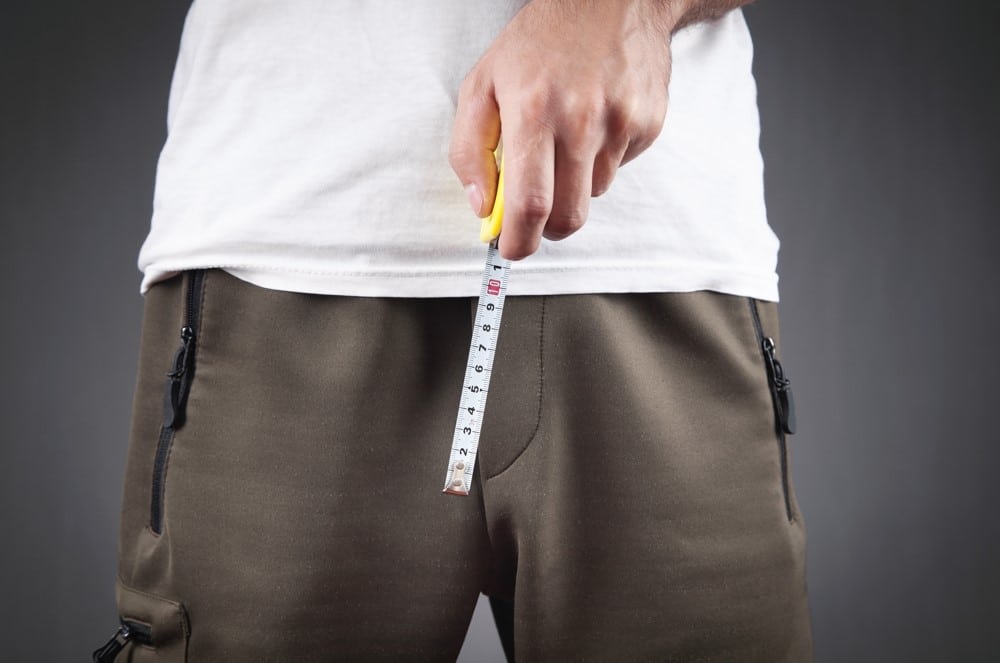In discussions surrounding penis enlargement (تكبير القضيب) size, a common underlying anxiety for many individuals stems from societal pressures, unrealistic portrayals in media, and a lack of accurate medical information. While many individuals who worry about their size fall within the normal range, a distinct medical condition exists called micropenis. It’s crucial to differentiate between perceived smallness and a clinically diagnosed micropenis, as the latter is a specific medical anomaly requiring expert evaluation and, potentially, intervention. Understanding micropenis from a medical perspective helps to dispel myths, reduce unwarranted anxiety, and guide individuals toward appropriate care if needed.
Penis Enlargement: Differentiating Micropenis from Perceived Smallness
The term “micropenis” is often used loosely in popular discourse, but in a medical context, it has a very precise definition. It refers to a penis that is significantly smaller than the average size for a male of a particular age, while still being structurally normal. This is distinct from subjective feelings of inadequacy or body image concerns that many individuals might experience even when their penile dimensions fall within the normal range.
Defining Micropenis Medically
For an adult male, a micropenis is typically defined as a stretched penile length (SPL) of less than 7 cm (approximately 2.75 inches). This measurement is taken from the base of the penis to the tip of the glans when stretched firmly. For infants and children, the definition varies by age and gestational stage, requiring specific pediatric endocrinological growth charts for accurate diagnosis.
It is important to emphasize that a micropenis is structurally normal in terms of its formation; it is simply underdeveloped in size. This contrasts with conditions like buried penis or webbed penis, where the penis may appear small due to anatomical issues that obscure its length but where the actual underlying penile shaft may be of typical size.
Causes and Underlying Factors
The primary cause of micropenis is almost always hormonal, specifically related to insufficient production or action of male hormones (androgens) during critical periods of fetal development. The most common underlying factors include:
- Hypogonadism: This refers to a condition where the testes produce little or no sex hormones. In the context of micropenis, this would be congenital hypogonadism, meaning it is present from birth.
- Hypothalamic-Pituitary Axis Dysfunction: The hypothalamus and pituitary gland in the brain play crucial roles in regulating hormone production in the testes. Issues with this intricate feedback system can lead to insufficient androgen stimulation during fetal development.
- Androgen Insensitivity Syndrome (Partial): In some rare cases, the body’s cells do not respond adequately to the available androgens, even if hormone production is normal.
- Idiopathic Causes: In a significant number of cases, despite thorough investigation, no specific cause can be identified, and the condition is classified as idiopathic.
Early identification, particularly during infancy, is crucial because timely hormonal intervention can often improve outcomes.
Penis Enlargement: Medical Approaches to Micropenis
When a micropenis is medically diagnosed, particularly in infancy or early childhood, the treatment approach is fundamentally different from the unproven methods often associated with generalized “penis enlargement.” Medical interventions focus on addressing the underlying hormonal deficiencies and, in some cases, considering surgical options later in life if hormonal therapy is insufficient.
Hormonal Therapy
The cornerstone of treating micropenis, especially if diagnosed in infancy or early childhood, is hormonal therapy.
- Testosterone Therapy: If diagnosed in infancy, a short course of testosterone injections is often prescribed. The goal is to stimulate penile growth during a critical window of development when the penis is most responsive to androgen stimulation. This therapy aims to increase penile length to within the normal range for the child’s age. The effectiveness can vary, and it is usually a carefully monitored course to avoid potential long-term side effects associated with premature puberty.
- Gonadotropin-Releasing Hormone (GnRH) Therapy: In some cases, if the issue is with the pituitary-hypothalamic axis, GnRH or human chorionic gonadotropin (hCG) may be used to stimulate the testes to produce testosterone.
The decision to initiate hormonal therapy and the specific regimen are highly individualized and depend on the underlying cause, the child’s age, and the potential benefits versus risks.
Surgical Considerations (Rare and Complex)
For adult males diagnosed with micropenis who have not responded adequately to hormonal therapy in childhood, or for whom hormonal therapy was not initiated, surgical options might be considered. However, it is vital to understand that these are complex procedures, typically reserved for severe cases, and they do not guarantee significant or universally satisfying outcomes.
- Phalloplasty: This is a highly complex reconstructive surgical procedure that aims to create a larger, functional penis using tissue grafts from other parts of the body (e.g., forearm, thigh). It is a multi-stage process with significant risks, long recovery times, and often requires further surgeries for urinary function and erectile capability. It is typically performed for severe cases, often in the context of gender-affirming care or severe congenital abnormalities, rather than simply for size augmentation in a structurally normal penis.
- Tissue Expansion: This involves placing tissue expanders under the skin of the penile shaft to gradually stretch the skin, which can then allow for the placement of grafts or implants. This is also a complex and multi-stage procedure.
These surgical interventions for micropenis are vastly different from cosmetic enlargement procedures. They are challenging, involve significant risks, and require specialized expertise. The goals are often functional restoration and improvement in quality of life rather than purely aesthetic enhancement.
Making Informed Decisions: The Importance of Professional Guidance
For individuals concerned about penis size, particularly if a medical condition like micropenis is suspected, the most informed choice is to seek evaluation from a qualified healthcare professional. Self-diagnosis and relying on unverified information or products can lead to significant physical harm and psychological distress.
- Consult a Urologist or Endocrinologist: These specialists are best equipped to accurately diagnose micropenis, identify underlying causes, and recommend appropriate, evidence-based treatments.
- Understand Normal Variation: A professional can provide accurate information about the typical range of penile sizes, often alleviating unwarranted anxiety.
- Address Psychological Impact: Concerns about penis size can have a profound psychological impact. A healthcare professional can also facilitate access to counseling or psychological support if body image issues or body dysmorphia are present.
- Prioritize Safety and Efficacy: Medical professionals prioritize treatments that are proven safe and effective, steering individuals away from potentially dangerous and futile methods.
Understanding micropenis from a medical perspective allows for a compassionate, accurate, and evidence-based approach to a sensitive topic. It underscores the importance of professional medical evaluation over self-treatment or reliance on unproven methods, ensuring that individuals receive the correct diagnosis and appropriate care for their sexual health concerns.
FAQs about Understanding Micropenis: A Medical Perspective
What is the medical definition of micropenis?
Medically, micropenis in an adult male is defined as a stretched penile length (SPL) of less than 7 cm (approximately 2.75 inches). For infants and children, specific age-adjusted growth charts are used for diagnosis.
How is micropenis different from simply having a small penis?
Micropenis is a clinical diagnosis based on a specific, significantly smaller-than-average measurement for a given age, despite being structurally normal. Having a “small” penis is often a subjective perception, where the size falls within the normal range but causes personal concern.
What causes micropenis?
Micropenis is primarily caused by hormonal deficiencies, specifically insufficient production or action of male hormones (androgens) during critical periods of fetal development. This can be due to issues with the testes (hypogonadism) or the brain’s hormone-regulating glands (hypothalamic-pituitary axis dysfunction).
Can micropenis be treated?
Yes, if diagnosed early, particularly in infancy, hormonal therapy with testosterone can often stimulate growth and increase penile length to within the normal range. Treatment in adulthood is more challenging, with surgical options being complex and typically reserved for severe cases.
What kind of healthcare professional should I consult if I suspect micropenis?
If you suspect micropenis in yourself or a child, you should consult with a urologist or an endocrinologist. These specialists have the expertise to accurately diagnose the condition and recommend appropriate medical management.
Are there any safe and effective non-surgical “penis enlargement” methods for micropenis in adults?
For true micropenis in adults, non-surgical methods widely promoted for general “enlargement” (like pills, creams, or most devices) are not scientifically proven to be effective and can carry significant risks of harm. Medical interventions for micropenis are highly specific and complex.
Can psychological support help individuals with concerns about penis size?
Absolutely. Concerns about penis size, whether related to micropenis or perceived smallness, can significantly impact psychological well-being and confidence. Counseling or therapy can help individuals address body image issues, manage anxieties, and develop a healthier self-perception.









